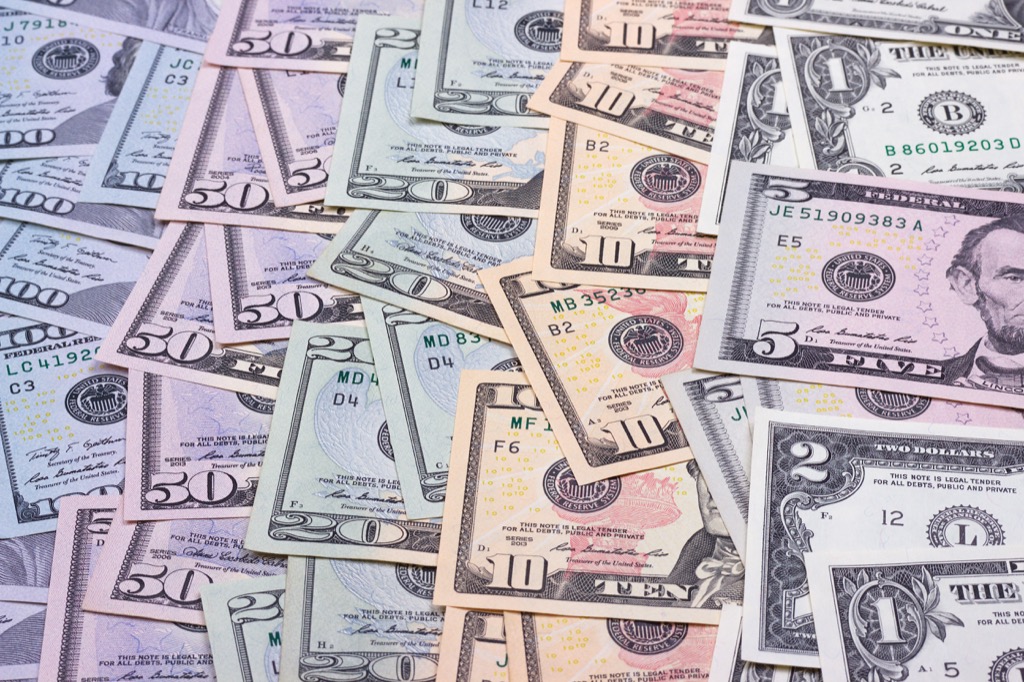


Judging by the 2,000+ favorites his tweet has amassed in less than 24 hours, he isn't the only one. "I used to think the government was bad, but now I think it is good," he tweeted. He shared a photo of a $10 bill ripped in half, a letter he wrote to the Bureau of Engraving and Printing asking for a reimbursement check, and a check from the U.S. "Daily Show" writer Dan Amira took to Twitter on Tuesday with a money hack that will have people regretting giving up on their cash just because it went through the laundry a few too many times. But one enterprising Twitter user tipped off the internet to an easier way of recovering the torn cash. Entropy might be important but there are much easier sources.Most people have painstakingly taped together a ripped dollar bill at some point in their lives in the hopes of salvaging the mangled money. The entropy might be somewhat useful too in bookkeeping like maybe using only bills ending with a 0 are for small cash transactions, 1 for large cash transactions, 2 is for drugs A, 3 for drug B etc. You'd also have to contend with the fed's coming after you for forging currency if the bills you distributed ever got into public circulation in any significant quantity so it should be pretty secure as long as they're sourced from a fairly high volume location like mcdonalds or something. The upfront cost of forging passable $1 bills is too high to be economical to pull off just for these low volume transactions, especially after the logistical cost of injecting the bills or otherwise tricking someone to using a fake as well as keeping a copy on hand but even if you achieved that. We could also do it with two bills, one from each party such that each party can have some proof that a transaction was or wasn't completed and with the right party in the case of a double exchange. The ripping of the bill itself could plausibly serve as a step in a multi step process where the carrier may demand that the bill be ripped after the serial and goods are confirmed but before not yet exchanged so that the drop can't claim that a delivery was not at least attempted on the part of the courier. Even when caught you may have some additional protection when the goods being immediately exchanged are otherwise legal, legal in the absence of money changing hands or difficult to establish in the absence of money or another component.Īssuming the actual transaction is reasonably atomic, which it should be unless there's a fight or something, the the carrier can always prove that they delivered to the correct drop if they have a physical copy of the agreed upon serial while the drop can prove that they didn't receive a delivery if they can reproduce an undamaged copy of the whole bill. If you're really smart you could also list a handful of possible serials for extra plausible deniability and hold/disperse the others such that the mechanism is still very likely to work due to the difficulty of finding a particular bill in circulation. You have some plausible deniability if found, "it's just money in my wallet, picked up at mcdonalds" and it's easy to hide/dispose of. So for starters there's disambiguation since all serials are unique, you won't have carriers knowingly delivering to the wrong drop assuming the drop keeps possession of the bill since it's globally unique. Once the bill is torn, it would be hard to claim the courier never showed, even if they could get both parts of it back. the tear could be preventing the D from ambushing C during the exit. The tear might be purely symbolic, to make it look more symmetric to both parties, who may or may not have read Schneier. The boss is also trying to simplify this protocol, make sure low level drug offenders don't have to do a complex ledger entry during the commission of a major crime. If C steals, D can now say, "I still have the Boss's whole dollar, why didn't C come take it?" If D steals, C can say "I have part of the dollar, proving delivery." So I think they're mainly trying to prevent the drop from stealing the money (claiming the courier never showed), and prevent the courier from stealing the money (claiming the drop has it). As I understand it though, they're tearing on site. That would help confirm identities to both sides - if the courier and drop don't know each other, they just match the bill halves before dealing. You could generate a key that way, but then we'd expect pre-distribution of each side.


 0 kommentar(er)
0 kommentar(er)
